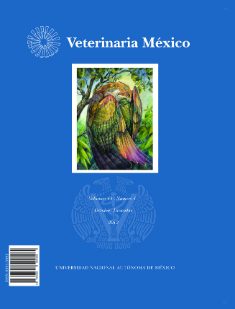Clinical efficacy of sodium alginate meshes for the control of infectious dissemination by Escherichia coli and Staphylococcus epidermidis in cavitated wounds with primary healing
Main Article Content
Abstract
The potential wound healing ability of sodium alginate (SA) meshes was determined in cavitated rat wounds infected either with Escherichia coli or Staphylococcus epidermidis. Wound progress was evaluated macroscopically and histopathologically to assess dissemination of the induced infection through evaluation of granuloma formation and adjacent tissue irritation. Five groups of 24 female Wistar rats weighing 280 ± 34 g were formed as follows: control group with SA mesh without inoculum, control group with Escherichia coli inoculum without SA mesh, control group with Staphylococcus epidermidis inoculum without mesh, group with SA mesh + Escherichia coli inoculum and group with SA mesh + Staphylococcus epidermidis inoculum. Abdominal flank incisions were performed under anaesthesia and groups were formed. Both macroscopic and histopathological follow up were carried out and results indicated that the presence of SA meshes avoids or greatly diminishes bacteria dissemination and adjacent tissue irritation. This reaction occurs even in the presence of Escherichia coli or Staphylococcus epidermidis. In the control groups with SA mesh without inoculum and in the groups with Escherichia coli inoculum without SA mesh, and control group with Staphylococcus epidermis inoculum without mesh and group with SA mesh + Escherichia coli inoculum re-epithelialization and wound healing aspect were better than in groups inoculated with Staphylococcus epidermidis, the general odd ratios showed that the dissemination risk was 58 times greater in treatment with SA mesh and E. coli as infectious agent (IC 95% 6.2-210). These results indicate that SA mesh is capable of providing adequate conditions to allow granulation of cavitated wounds, without irritation to adjacent tissues and avoiding dissemination of the infection by E. coli and Staphylococcus epidermidis in rats. However, presence of granuloma can be a healing or esthetic disadvantage, as observed in control group with SA mesh without inoculum.
Keywords:
alginate cavitated wounds hidrogel surgical mesh
Article Details
License

Veterinaria México OA by Facultad de Medicina Veterinaria y Zootecnia - Universidad Nacional Autónoma de México is licensed under a Creative Commons Attribution 4.0 International Licence.
Based on a work at http://www.revistas.unam.mx
- All articles in Veterinaria México OA re published under the Creative Commons Attribution 4.0 Unported (CC-BY 4.0). With this license, authors retain copyright but allow any user to share, copy, distribute, transmit, adapt and make commercial use of the work, without needing to provide additional permission as long as appropriate attribution is made to the original author or source.
- By using this license, all Veterinaria México OAarticles meet or exceed all funder and institutional requirements for being considered Open Access.
- Authors cannot use copyrighted material within their article unless that material has also been made available under a similarly liberal license.



